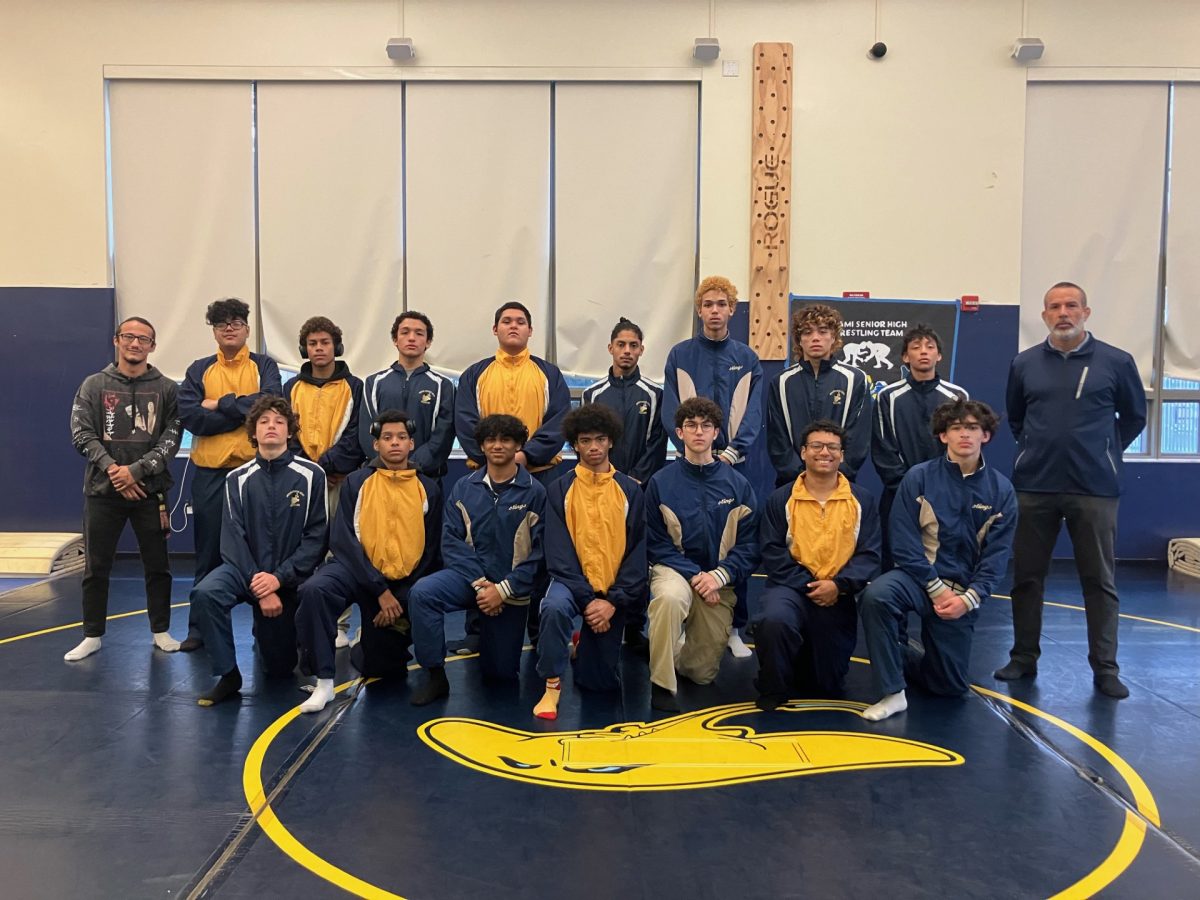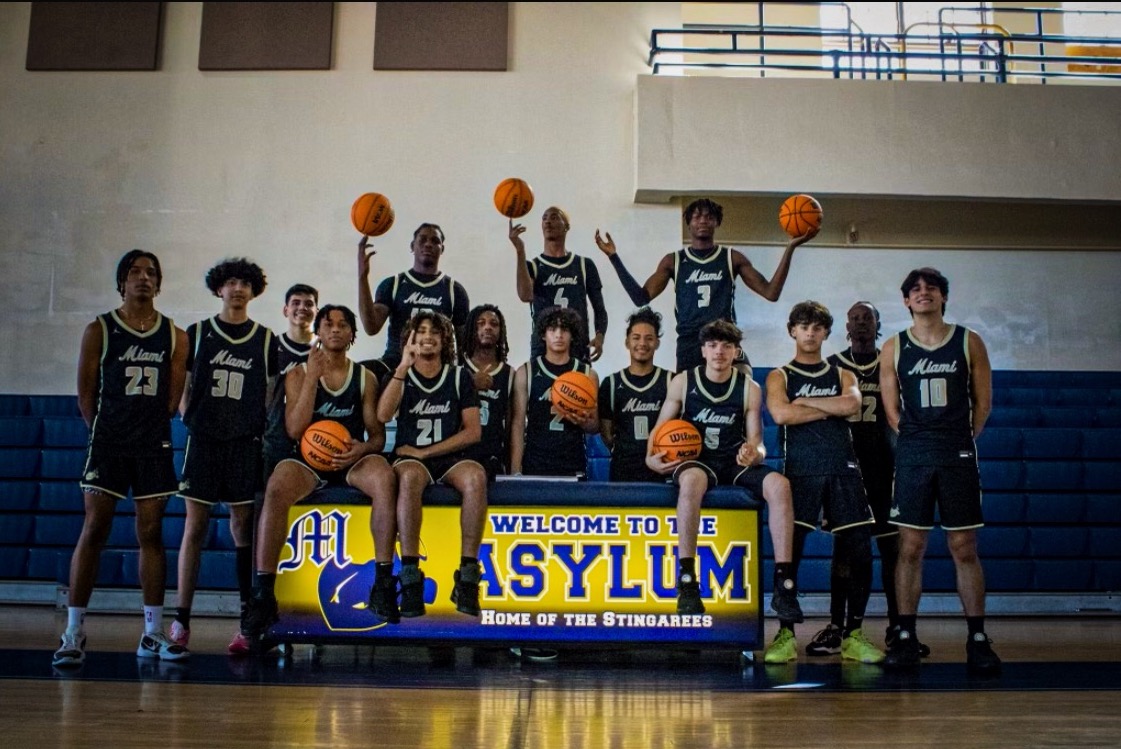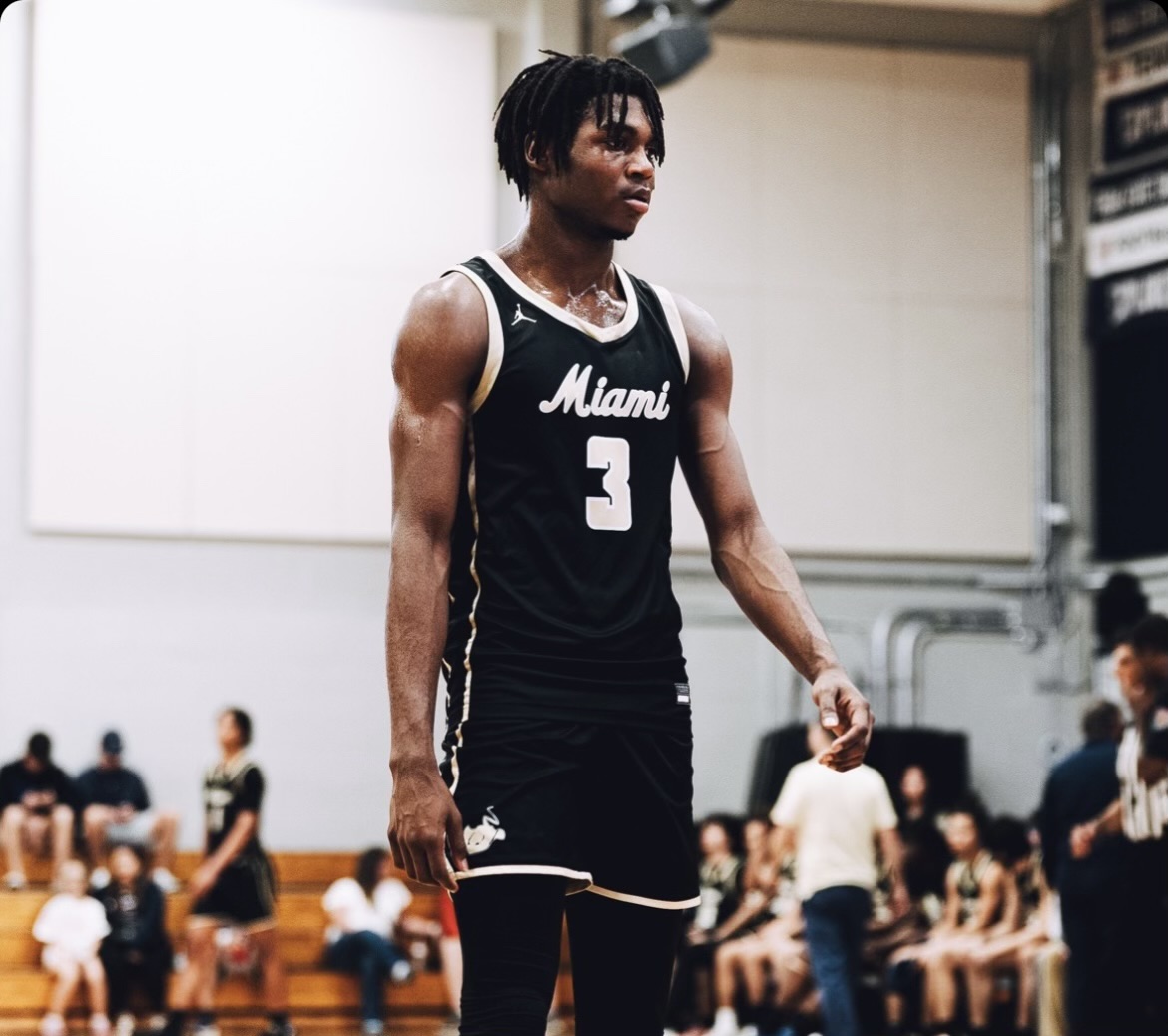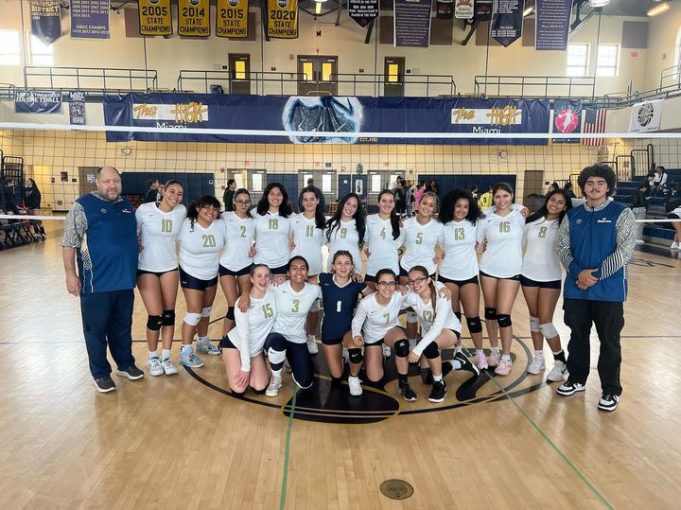Behind the Scenes
February 20, 2019
You know that newspaper students pass out every 6-8 weeks to your class? Students in the Journalism 1 and 2 classes work hard to make sure readers get an interesting or informative story. The Miami High Times newspaper is something journalism students put a lot of work into, from planning, interviewing, gathering information, and creating magnificent stories.
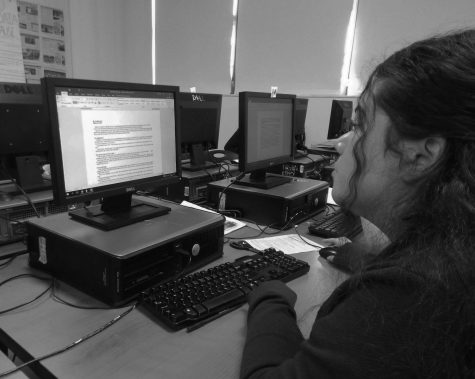
The First Steps
Journalism students are allowed to write about whatever they like. Junior editor-in-chief Carolina Soto says, “I think about something I want to address to students or what’s going on with friends.” In order to get started, the first thing they have to do is come up with 5 ideas to write about. As soon as they show their 5 topics to their teacher, they get their first choice approved.
The next step is creating a story plan, which is the most important part of the process. According to journalism teacher Mr. DeNight, to complete a story plan, students write down the questions that they want to answer in their story and then list who they’re going to interview.
Once the plan is approved, students are given time in class to complete their interviews. Journalism 2 student and editor-in-chief Annette Chu states, “We have 3-4 classes to get our interviews done.”
MHS Times Online
As you may know, the newspaper is also online at https://miamihighnews.com. According to Mr. DeNight, the newspaper first started getting published online about 4-5 years ago. Reading stories online is a great way to let writers know how many people are interested and reading their stories. Current journalism 1 student Ashley Martinez states her recent story from December 2018 on the Medical Skills Program reached 110 readers online. Mr. DeNight states that one article from 2 years ago received over 300 readers, and many were from different countries!
Journalism 1 vs. Journalism 2
Although Journalism 1 and 2 are similar, they are also extremely different. According to Mr. DeNight, “Journalism 1 students are learning how the newspaper works and learning the deadlines, while Journalism 2 students are the leaders of the newspaper staff, having layout editors, online editors, news editors, and editors-in-chief.”
Editor-in-chief Annette Chu states, “It’s a lot more responsibility being in journalism 2. We must make the final product, be faster, more active and produce news in high quality.”
Changes
As the years go by, people wonder how they can change something to make it better. Colored pages are a change that wasn’t available until 10 years ago. According to Mr. DeNight, the journalism classes also seem to be getting smaller. “With all the new electives offered at Miami High, journalism classes have now gone from 35 to 10 students per class,” he said.
Junior editor-in-chief Carolina Soto says she likes the newspaper the way it is, but if she could make one change, it would be adding a profile picture of the writer next to their name.
Sometimes the change someone wants isn’t necessarily physical but emotional. Anette Chu would like to see a change in the way people treat the newspaper. She says, “I saw someone grab a stack of newspapers and throw it in the trash, and that hurt me because we put our blood, sweat and tears into making it for it to be treated as trash.”
10 Steps to Success in Journalism Class
Step 1: Think about 5 topics you want to write about
Step 2: Get them approved by the teacher and pick one
Step 3: Start your story plan
Step 4: Get your interviews done
Step 5: Get your first draft checked by your teacher
Step 6: Make all needed corrections
Step 7: Finish your final draft
Step 8: Get your photo & sidebar
Step 9: Get your beat sheets done
Step 10: Write your news brief

